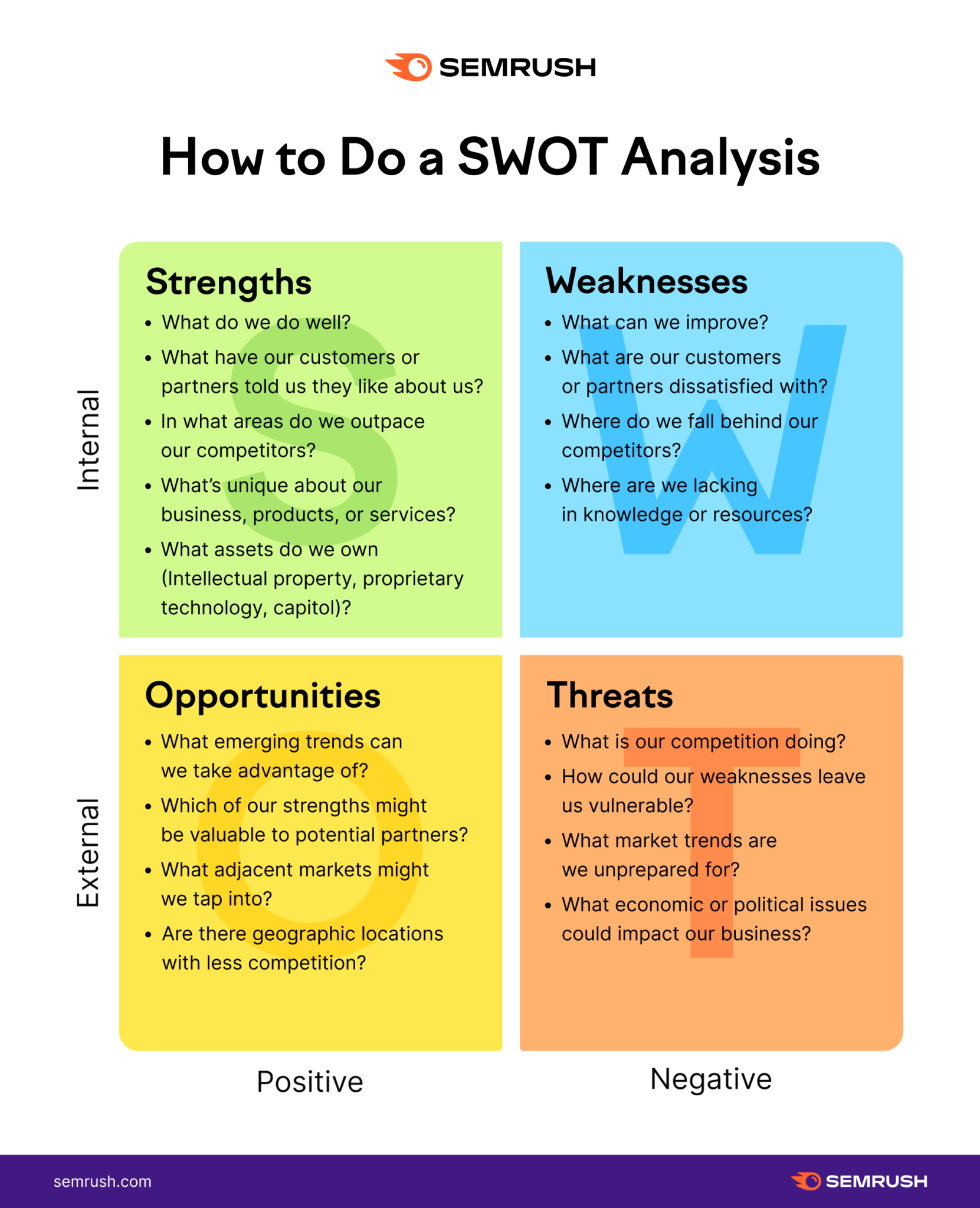What Is SWOT Analysis in Workforce Management and How to Conduct It Effectively?
Table of Contents
Competition is intense these days, and all organizations need a strong differentiator to keep them a step ahead. There is a definite need for a strategic plan, and a SWOT analysis is a great place to start.
In this article, we will walk you through how to perform a SWOT analysis while showing you multiple SWOT analysis examples along the way.
What is SWOT analysis?
SWOT analysis is a method used to identify a business’s or a specific project’s strengths, weaknesses, opportunities, and threats. Whether you’re a small business or a large enterprise, anyone can use SWOT analysis to make improvements.
SWOT isn’t a regular activity. You apply this strategy mainly for general overviews of business situations and scenarios, such as:
- Before implementing a large change
- When launching a new company initiative
- To identify opportunities for growth
- For a complete overview of business performance
A SWOT analysis focuses on internal and external factors and also considers current and future potential. It relies on a realistic, fact-based, data-driven approach to identify the strengths and weaknesses of an organization, its initiatives, or its standing within the industry. This data helps businesses determine which strategies are more likely to be successful and which are not.
Let’s break down each of the SWOT terms further:
Strengths
This refers to an area where the business shows a good result. Studying these can give clarity on what’s working. Further, learnings from here can be applied in other areas that need a push.
Weaknesses
Here, the focus is on initiatives that are underperforming. Once weaknesses are identified, they provide a starting point for improvement.
Opportunities
Opportunities arise from strengths and weaknesses and have the potential to give a business a competitive edge. External factors can shine a light on an entirely new business area.
Threats
Threats are external factors that are out of your control and could create a problem. A global pandemic or strife in a region is a good example of a threat.

What are the Benefits of SWOT Analysis?
A SWOT analysis won’t solve every major business problem. However, it is a great place to start. Doing a SWOT analysis can make strategic decision-making easier in the following ways:
- Simplifies complex problems
- Considers External Factors
- Works as a Versatile Business Strategy
- Leverages All Data
- Does Not Require Special Training
- Simplifies Complex Problems: Excessive data can be overwhelming, and it can get challenging to categorize and analyze relevant points when making a decision. A SWOT analysis can segregate ideas and rank bullets by importance.
- Consider External Factors: A business outcome often depends on external factors that are out of the company’s control. A SWOT analysis covers both, presenting a clearer picture of the actual situation.
- Works as a Versatile Business Strategy: A SWOT analysis can be applied to an organization, a team, or even an individual. The tool’s versatility allows it to analyze a product line, brand identity, acquisitions, or geographical expansion.
- Leverages All Data: A company can identify its strengths and weaknesses with internal data. However, a good SWOT analysis can help gather information about markets, competitors, or likely opportunities and threats.
- Does Not Require Special Training: A business does not need to rely on an external company to conduct the analysis, and internal staff members can contribute to the preparation too.
What are the Challenges in SWOT Analysis?
Even though SWOT is a useful strategic planning tool for businesses and individuals alike, it does have certain limitations.
- Can be Subjective and Biased: SWOT relies heavily upon individual perceptions, which can lead to biases. Crucial data may get ignored or misinterpreted, leading to incorrect conclusions. For instance, an established manufacturer might underestimate the threat of a new entrant due to an overconfidence bias and impact its market share.
- Cannot Prioritize: SWOT analysis can highlight current issues, but is not equipped to prioritize them. The onus is on the organization and its leaders to identify areas that deserve immediate attention. For instance, an enterprise looking at expansion into new territories may become overwhelmed with the possibilities and not rank them accurately. Thus, resources could be spread too thinly or given to projects less likely to succeed.
- Provides Static Analysis: SWOT analysis focuses on a particular moment, and cannot keep up with the evolving nature of the market, leading to outdated strategies. For example, a typical brick-and-mortar store looking to expand outlets might overlook the growing trend of e-commerce.
Steps to Conduct a SWOT Analysis
We’ve broken down the process of conducting a SWOT analysis to simplify the process for you. Here are the six steps.
Consider Internal Factors
Both strengths and weaknesses can be found within the organization and are easier to solve. You can make improvements in internal factors by asking stakeholders to come up with suggestions or introducing new tools into your processes.
Evaluate External Factors
These factors are not always within your control and can be trickier to overcome. You can get around them by competing with market trends, forecasting trends before they occur, improving reaction time, tracking competition, etc.
Conduct Brainstorming Sessions
High-impact brainstorming sessions can spur creativity and throw new ideas into the hat. Involve people from different departments. Keep the numbers small – around 10 members is ideal. Have a clear end goal for the session.
Get Creative
You need to get creative to come up with creative ideas. Play team-building games, randomly select ideas and discuss them, talk through obviously bad ideas, etc.
Prioritize Opportunities
Study each idea and give it a ranking based on its criticality. Once the top ideas are identified, it is easier to implement them.
Take Action
This is the most important step. Once the list of prioritized opportunities has been identified, it is time to turn them into strengths.
The Bottom Line
A SWOT analysis is a great way to decide on the next business strategy. It can help prioritize action, develop strategy plans, improve weaknesses, and grab opportunities. However, it is one of several techniques and should not be used in isolation. SWOT is a good starting point and for a deeper analysis, it is advisable to use another planning technique.






